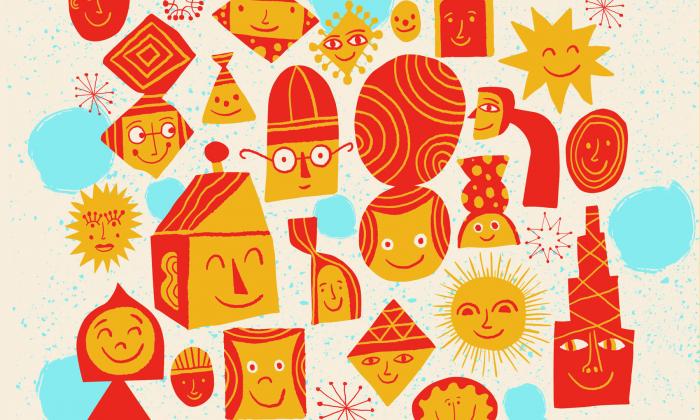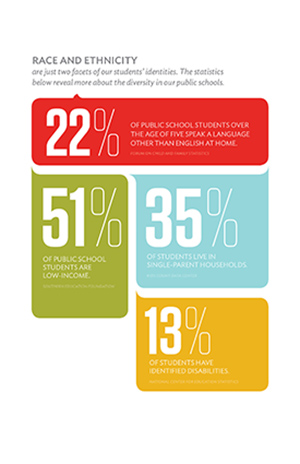
Who’s in My Classroom?
2014–15 was the first school year during which no single racial or ethnic group made up a majority of the student body in our nation’s public schools.

Reflect and Research
Begin with yourself.
Write down six words or phrases that define your identity. Now select the one you consider least essential to who you are and take it off the list. Continue to remove “less essential” aspects of your identity one at a time until only one is left.
- How did you choose the original words or phrases for your list?
- How did you decide which to eliminate first?
- How did the process make you feel?
- Does the remaining word or phrase represent all of who you are?
Follow up your reflection by trying this activity with colleagues.
Think about your students.
Ask yourself, “How many children in my school community…”
- speak a language other than English at home?
- were born outside the United States or have parents who were?
- live in intergenerational households?
- are members of families who actively practice a religion?
- live with caregivers other than their parents?
- live with single or same-sex parents?
- identify as LGBT?
- live at or below the poverty line?
- have physical or cognitive disabilities?
Some of this information may be available via school records or data-gathering systems. Start there. Then use a classroom strategy like a Community Action Board to become more familiar with other aspects of your students’ identities and the issues that matter to them.
 Create a community action board.
Create a community action board.
Encourage students to post articles, illustrations, comics, poems or quotations that capture what’s happening in their homes and neighborhoods.
- Choosing from the issues that emerge on the Community Action Board, adopt an issue facing your local community. Have students work with local allies or advocates to generate ideas for how to address the issue. Invite community members to your class or attend a community gathering and present the class findings along with a suggested course of action.
- Invite your students to reflect on the experience, by themselves and in groups. Talking about community issues can bring students together despite gaps and differences.
- Finally, reflect on the experience yourself. What did the Community Action Board teach you about your students’ identities?
Audit your classroom.
Take a look around and ask yourself, “Whose identities and voices do I invite into my classroom?” Record your thoughts in a professional reflection journal.
- Complete a classroom and curriculum audit to review the diversity represented in your classroom décor and curricular materials. Use the chart below to list examples and where they are found. How do they compare to what you wrote in your journal? How do they compare to the diversity that you know exists among your students?
Put It All Together
What is identity? How is identity developed? How does identity affect our relationships?
- Complete a professional development module (based on the Teaching Tolerance Anti-bias Framework) to learn more about the many characteristics of identity and how they affect relationships within the school building and the classroom.
- Watch Giovanni Blair McKenzie at the 2015 Human Rights Campaign Foundation’s Time to THRIVE Conference speak about the experience of growing up in Jamaica and fighting for equality for LGBT youth of color.
